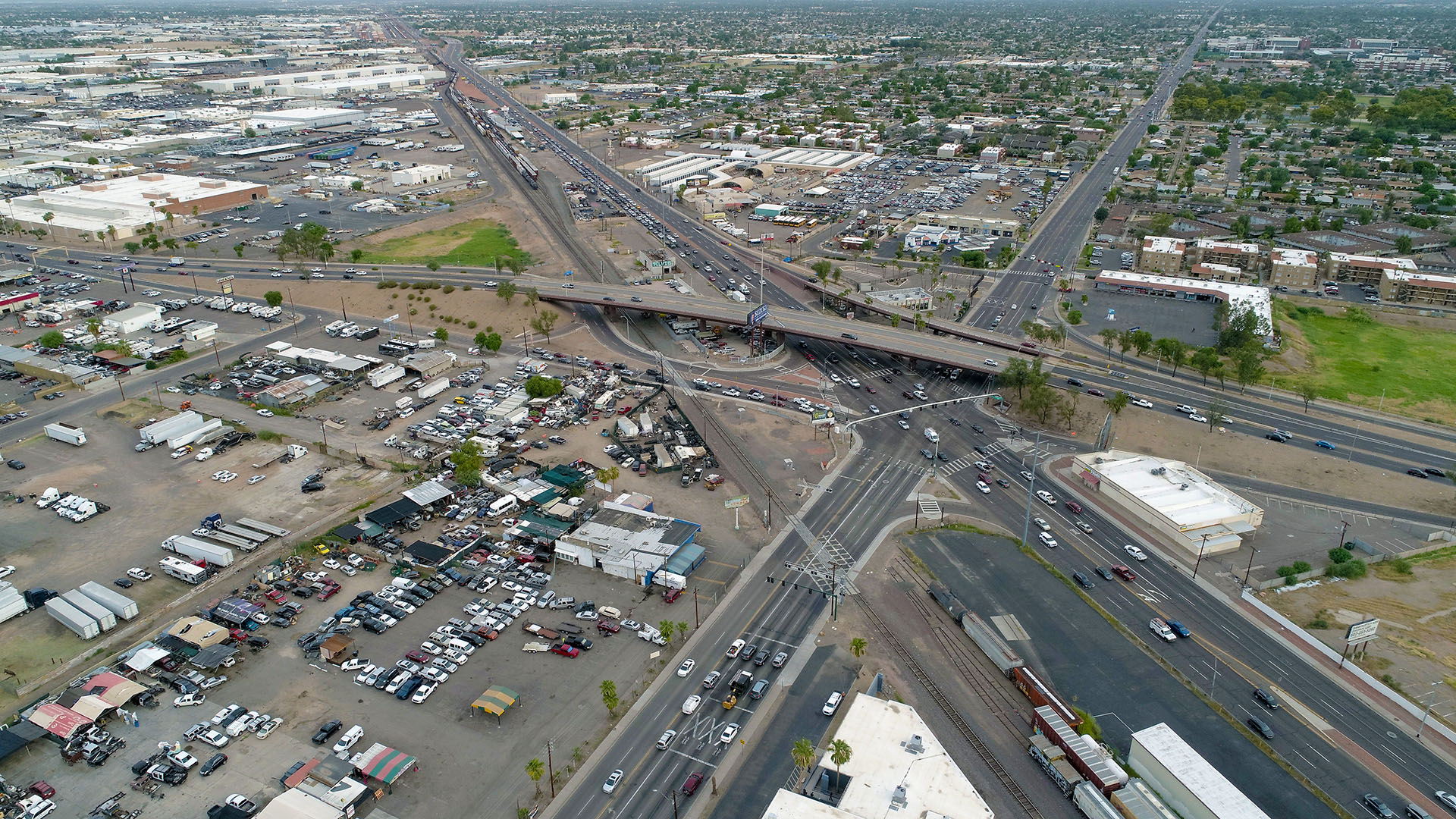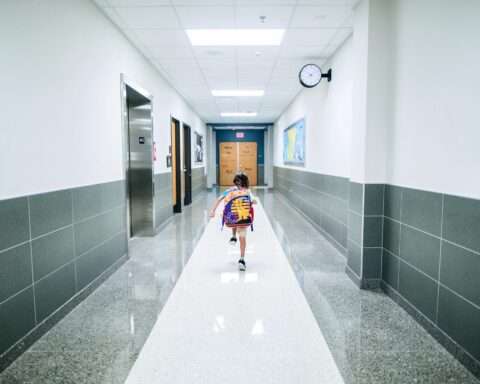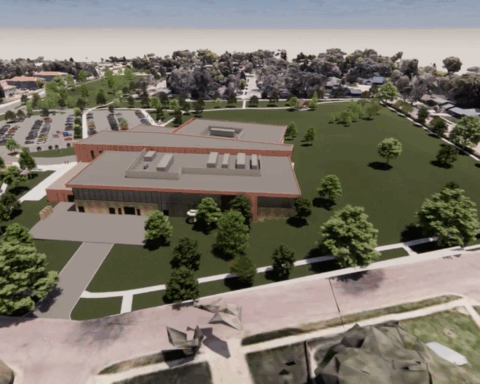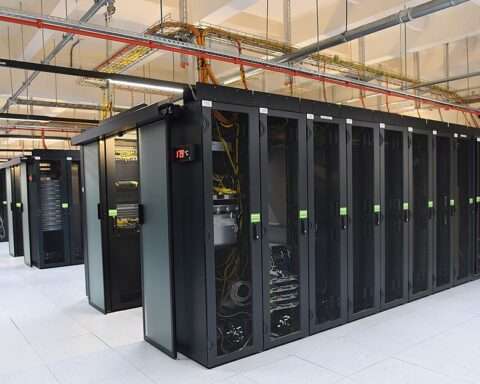A $356 million transportation project in Phoenix is securing a surge of federal support to reconfigure a convoluted intersection near Glendale. Led by the Maricopa Association of Governments (MAG), the project is poised to improve congestion and public safety at a complex crossing that serves vehicle, locomotive, freight and pedestrian traffic.
The US 60 (Grand Avenue)/35th Avenue/Indian School Road Grade Separation Project will reimagine a six-legged/arterial intersection that services two at-grade railroads and connects US 60, 35th Avenue and Indian School Road. Serving more than 140,000 vehicles daily, the intersection is unable to accommodate congestion caused by its current configuration.
RELATED: Illinois receiving grants totaling $305.5 million to improve Chicago-area roads, rails
The project’s federal support comes through two grant programs aimed at funding large, complex or traditionally hard to finance projects – the National Infrastructure Project Assistance (MEGA) program and the Nationally Significant Multimodal Freight & Highway Projects (INFRA) program. Administered through the U.S. Department of Transportation, MAG will utilize a $133.9 million INFRA grant and a $12.7 million MEGA grant to partially fund the project.
The intersection project will also rely on local funding through Proposition 400, a dedicated half-cent sales tax for transportation initiatives and projects. This local funding initiative is expected to cover a substantial portion of the remaining project costs.
In addition to federal grants and local funding, BNSF Railway, the project’s railroad partner, is committing $5 million in private investments to begin the project promptly.
Primarily, MAG will enhance the intersection’s safety and efficiency by elevating 35th Avenue to create a separate raised intersection connecting with Indian School Road. This intersection would carry over Grand Avenue and the two BNSF railroad crossings by developing bridges capable of accommodating future high-capacity transit demands.
In addition to improving traffic flow and safety, the project will also include wider ADA-accessible sidewalks, right of way requirements, bus pullouts and bus shelters.
Along with reduced traffic congestion and more efficient rail operations, the project will reduce conflicts between pedestrians and bicycles, improve traffic signal operations and travel time reliability.
By improving traffic flow through the intersection and surrounding industrial centers, officials anticipate the project could bring $2.03 billion in economic benefits to the public and reduce the average supply chain cost of freight and rail.
As the intersection affects multiple multimodal transportation services, the project will incorporate considerations from industry stakeholders, such as the Arizona Department of Transportation, the City of Phoenix and BNSF Railway.
The project is expected to be shovel-ready by 2026.
Photo courtesy Maricopa Association of Governments













